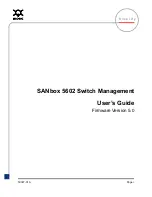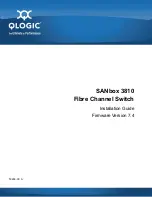
27
•
Single-port
loopback
—Occurs when a switch receives a packet that it sent out and the
receiving interface is the same as the sending interface.
•
Multi-port
loopback
—Occurs when a switch receives a packet that it sent out but the receiving
interface may not be the same as the sending interface.
To enable multi-port loopback detection, configure the
loopback-detection multi-port-mode
enable
and
loopback-detection enable
commands in system view, and the
loopback-detection
enable
command in the view of the target interfaces.
Examples
# Enable multi-port loopback detection to monitor loops between Ethernet 1/0/1 and Ethernet 1/0/2.
<Sysname> system-view
[Sysname] loopback-detection enable
[Sysname] loopback-detection multi-port-mode enable
[Sysname] interface ethernet 1/0/1
[Sysname-Ethernet1/0/1] loopback-detection enable
[Sysname-Ethernet1/0/1] quit
[Sysname] interface ethernet 1/0/2
[Sysname-Ethernet1/0/2] loopback-detection enable
loopback-detection per-vlan enable
Syntax
loopback-detection per-vlan enable
undo loopback-detection per-vlan enable
View
Ethernet interface view, port group view
Default level
2: System level
Parameters
None
Description
Use
loopback-detection per-vlan enable
to enable loopback detection in each VLAN on trunk or
hybrid ports.
Use
undo loopback-detection per-vlan enable
to disable loopback detection in all but the PVID on
trunk or hybrid ports.
By default, a trunk port or hybrid port performs loopback detection only in its PVID.
The
loopback-detection per-vlan enable
command is not applicable to access ports.
Examples
# Enable loopback detection in all VLANs on hybrid port Ethernet 1/0/1.
<Sysname> system-view
[Sysname] loopback-detection enable
[Sysname] interface ethernet 1/0/1
[Sysname-Ethernet1/0/1] loopback-detection enable
[Sysname-Ethernet1/0/1] port link-type trunk
[Sysname-Ethernet1/0/1] loopback-detection per-vlan enable
















































